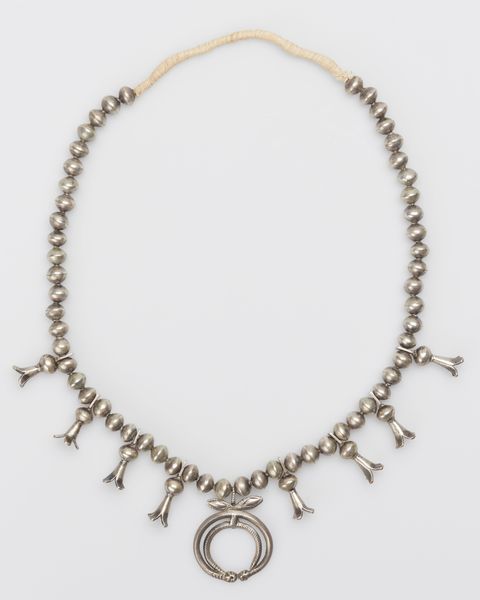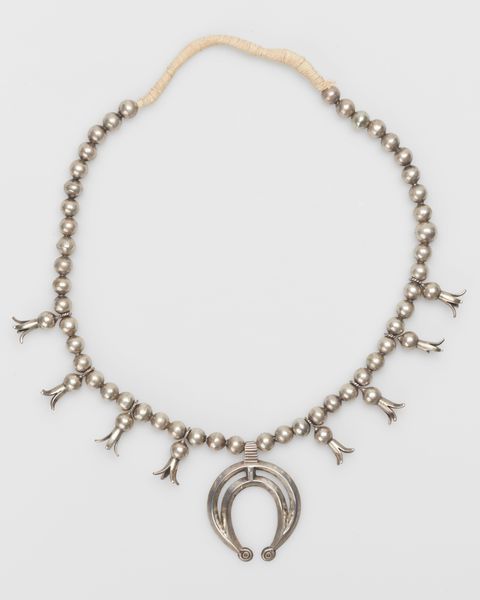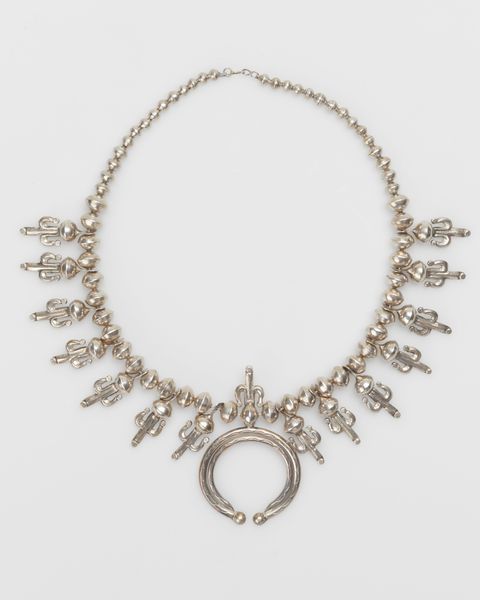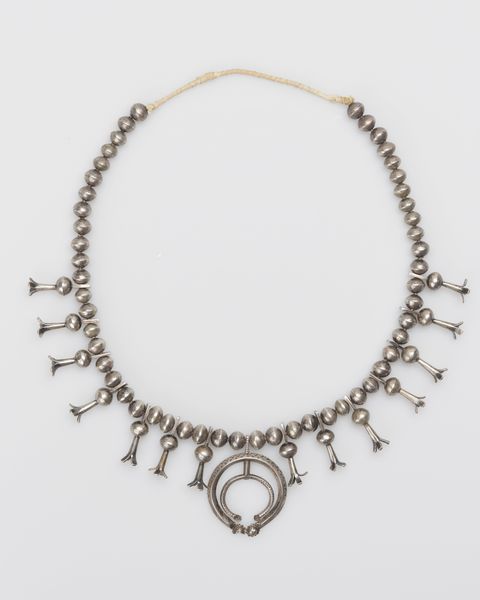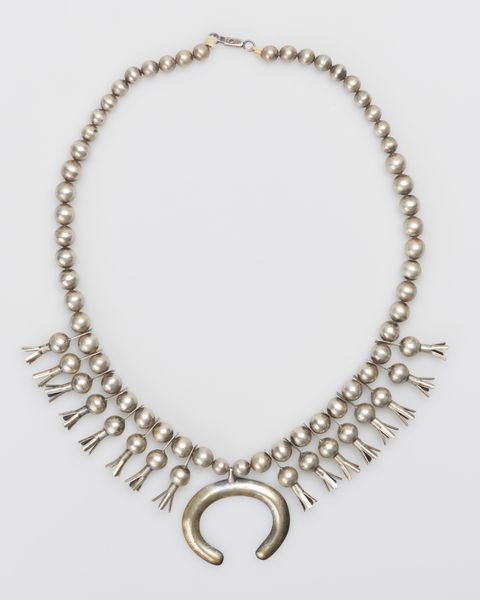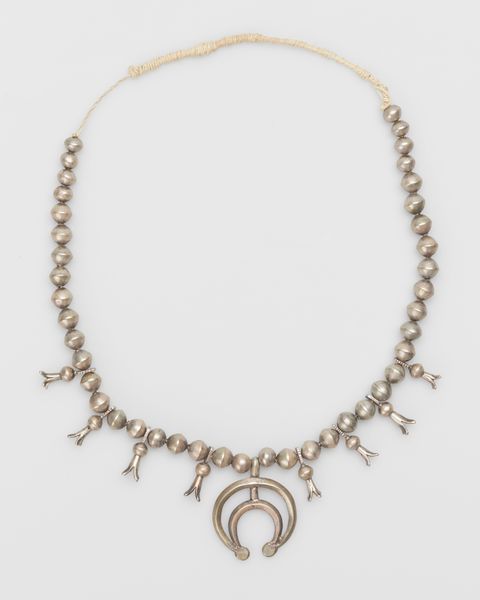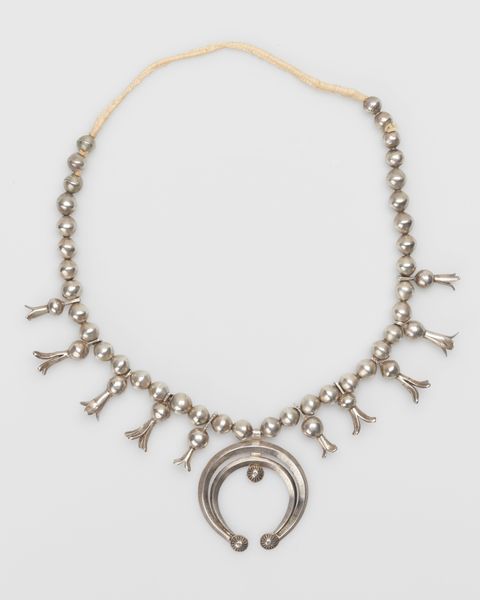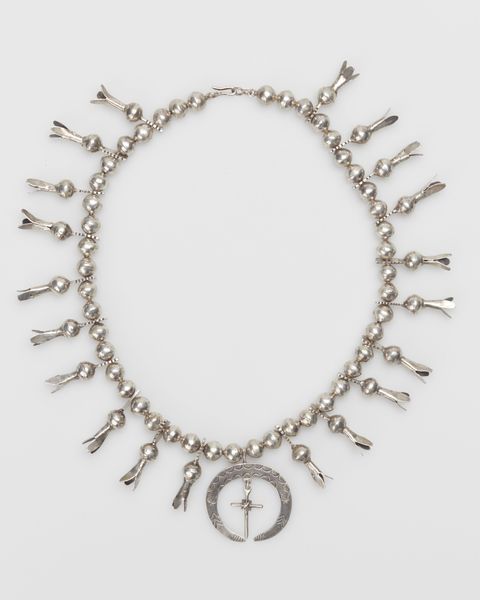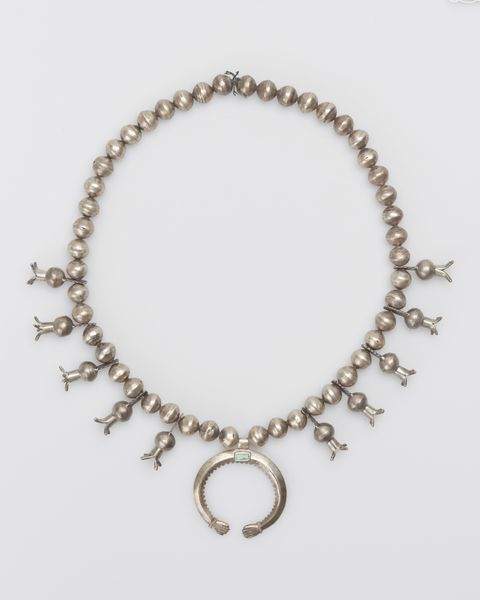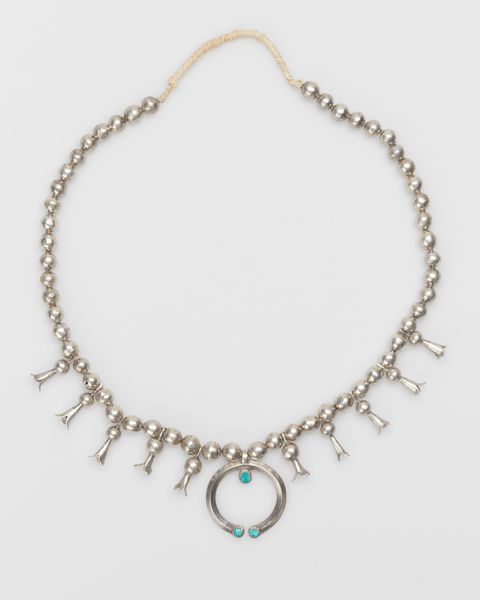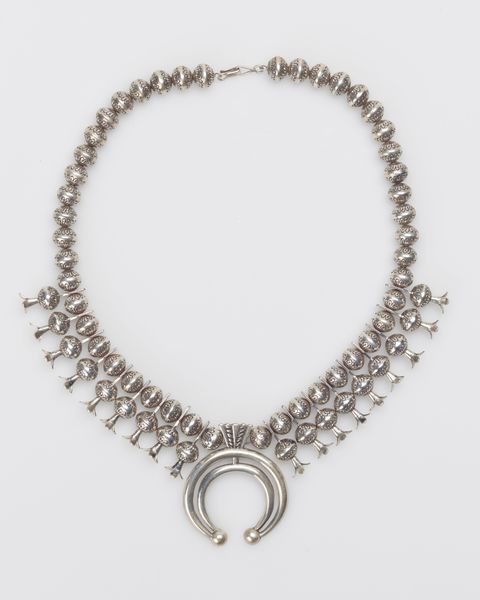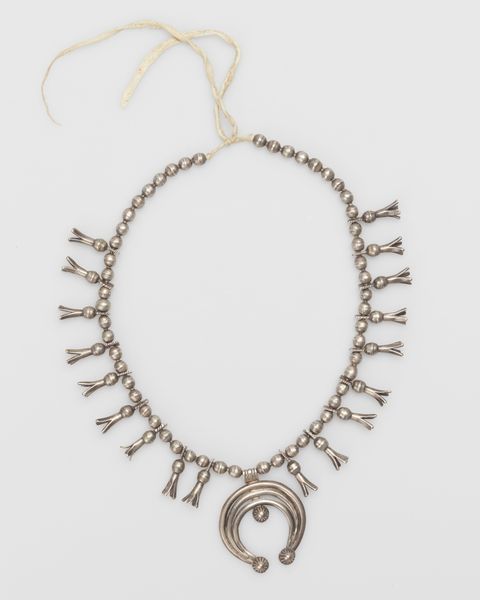
silver, metal
#
silver
#
metal
#
indigenous-americas
Copyright: Public Domain
Editor: This is a stunning Navajo squash blossom necklace, likely crafted around the 1940s from silver. The individual beads and blossom shapes give it a wonderful texture. How do you see the materials and processes shaping its meaning? Curator: The necklace speaks volumes about the resourcefulness and adaptation of Navajo silversmiths. Silver, initially acquired through trade, became a primary material. Examining its source – perhaps repurposed coins – tells a story of economic exchange and cultural transformation. The labor invested in shaping each bead and blossom also signifies value and skill within the community. Editor: So, the material itself connects the piece to broader historical trends. Curator: Exactly! Consider also the "squash blossom" motif itself. While its origins are debated, it certainly references plant forms, possibly drawing from neighboring cultures. Investigating the tools used, the workshops, and even the market where it was sold, allows us to understand the necklace not just as an object of beauty, but as a product of complex social and economic forces. How does this perspective shift your understanding? Editor: I see it differently now! I hadn't considered the trade and labor that went into making it. Thinking about it just as a pretty necklace is limiting. It’s tied to history. Curator: Precisely. By looking at the materiality, production, and social life of this necklace, we uncover deeper stories about cultural exchange, economic adaptation, and the ingenuity of Diné artists. Editor: It’s fascinating to think about how materials carry so much history and meaning. I’ll definitely be considering the "how" and "where" of art much more closely from now on.
Comments
No comments
Be the first to comment and join the conversation on the ultimate creative platform.
